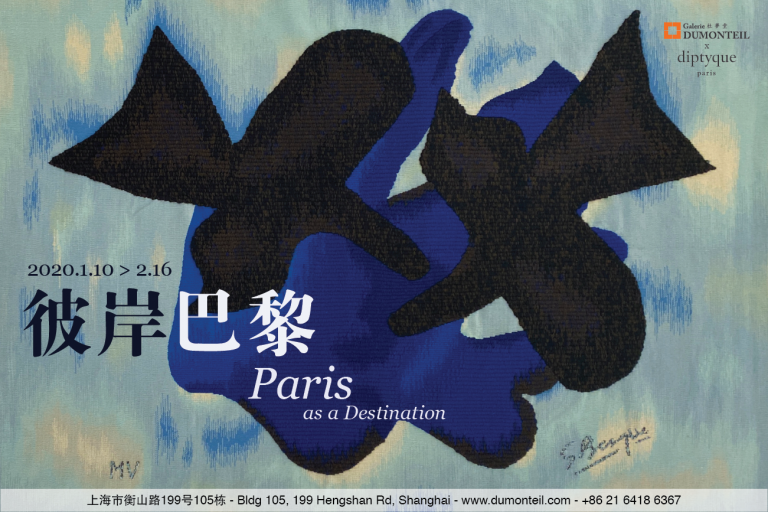Galerie Dumonteil × Diptyque is pleased to present Paris, as a Destination, a group exhibition featuring 30 paintings, works on paper, sculptures, and tapestries from 13 artists who each have/had their individual stories connected to Paris. This is an attempt to create a dialogue between artistic creation and the idea of Paris — as a destination, a way of living, reminiscences of La Belle Époque, or simply a starting point for daydreaming — within the European intellectual tradition.
Recent creations and modern works, spanning over a hundred years, are juxtaposed in the gallery space, like fragments of time imprinted in our memory. Occupying the vitrine, Bliss, Tess Dumon (b.1990)’s most recent woman figure exemplifies the visually captivating magnificence of her sculptures, while her allegorical works on paper attract the viewers from a different sentimental perspective through her concise yet eloquent lines. Equally expressive in two dimensions, Ugo Schildge (b.1987) challenges the definition of painting through his unique techniques and choice of media — plaster, wood, and natural pigments, whereas Ruben Fuentes (b.1980)’s powerful and unique brushwork makes his paintings and works on paper both familiar and otherworldly to the viewers.
Sharing the exhibiting space with these three artists are Aubusson tapestries from 1950s and 1960s with extraordinary quality and original works by Jean Lurcat (1892-1966), Jean Picart Le Doux (1902-1982), both instrumental figures in reviving the art of tapestry in the 20th century, and the pioneer of Cubism Georges Braque (1882-1963).
The sculptures in the show epitomize how works of bronze evolve while elegance and grace remain across the decades — from Marcel Derny (1914-2003)’s Swan, Falcons and Owl, to Jean-Marie Fiori (b.1952)’s French Bulldog, Daniel Daviau (1962)’s Giraffe, Wang Keping (b.1949)’s Birds, Mia Fonssagrives Solow (b.1940)’s Benedetto, and Hubert Le Gall (b.1961)’s Eternal Spring. In concert with these works are landscapes by Camille Roche (1894 - 1948) who perfectly embedded the notion of paradise in his works.
These thematically and technically diverse works, whether modern or contemporary, provide a rich palette of perspectives and expressions as the artists engage with the cultural discourses of their time in his or her unique language. As Marcel Proust once said, “Thanks to art, instead of seeing one world only, our own, we see that world multiply itself and we have at our disposal as many worlds as there are original artists.”
